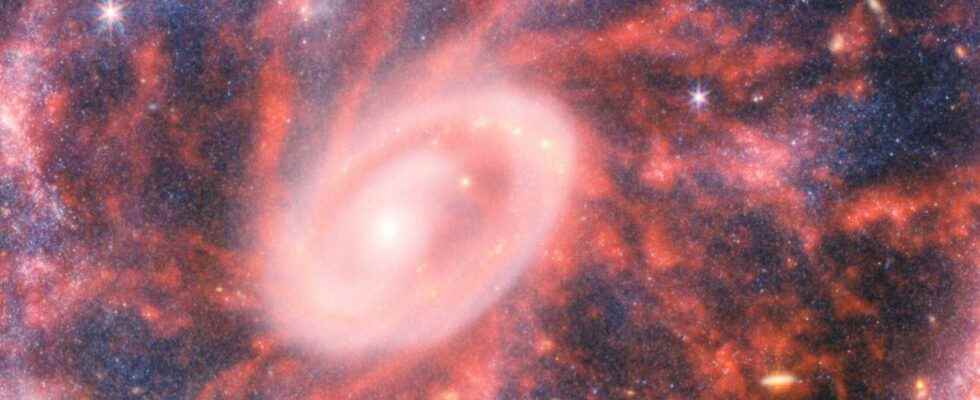Another masterstroke for James-Webb with this composite image of a surprising wheel-shaped galaxy. The penetrating view of the powerful space telescope shows never-before-seen details of this galaxy which collided about 400 million years ago. What do they show us?
The picture of the chariot wheel galaxy taken by Hubble in 2007 and revisited in 2018 had us all amazed by the beauty and complexity of this ring-shaped galaxy distorted by a violent collision. Observations in the visible and theultraviolet by the famous space telescope entertained the astronomers for the details of its outer crown, set ablaze by the birth of a multitude ofstarsthe active central region and the spokes of its wheel, curved in a spiral, which resisted the shock.
This time, the different vision of James Webbin L’infrared, offers in-depth knowledge of this interacting galaxy located 500 million light-years from Earth. We thus discover, not without fascination and giddiness, what the researchers did not see before, or so badly: the skeleton of dust and gas of ESO 350-40 (his real name), as well as the effervescence of his black hole central.
A very active galaxy
In the distant past, this so-called Chariot Wheel galaxy resembled our own, the Milky Waysporting a spiral shape like a whirlwinduntil interactions with other members of its galactic group led it to a large-scale collision. speed with a galaxy, here located out of frame. That was about 400 million years ago, and now we admire and study what resulted from that, the evolution, the changes in its morphology and the population of stars under the influence of shock waves on the clouds of dust. The two concentric rings are like the waves created on the surface of the water after the throwing of a pebble. The vague the largest forms a sparkling crown of young stars whose matrixes were fertilized by the violent compression of the matter. The spectacle is even more vivid within the inner ring and at the very heart of the galaxy, visibly in full boiling, as shown by the James-Webb’s piercing view which reveals clusters of stars once hidden by thick veils of dust.
The composite image that combines the observations of Miri and Nircam can also see fine details of nearby galaxies and flush out a multitude of other galaxies, scattered in the background over billions of light-years. A dazzling spectacle, “and this is still only the beginning”.
Interested in what you just read?
